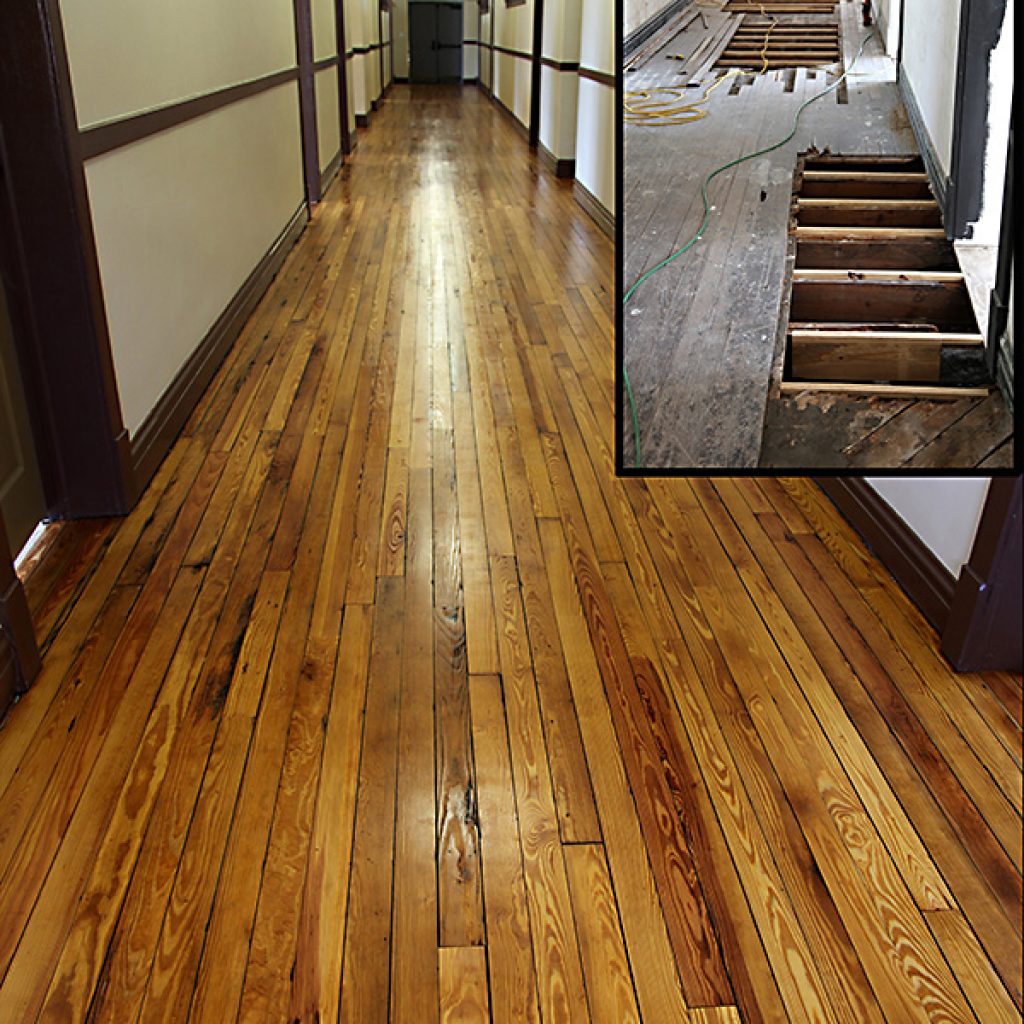Picture this: you’ve painstakingly chosen the perfect hardwood flooring for your home – a rich, warm hue that perfectly complements your décor. But as the installation begins, a nagging question arises: “Should the planks run in the same direction throughout the entire space?”

Image: tandgflooring.com
This might seem like a trivial detail, but the direction of your hardwood flooring can have a significant impact on the overall appearance of your home. A well-planned layout can create a sense of spaciousness, while a poorly executed one may fragment the room and detract from the elegance of your chosen wood.
Understanding the Impact of Direction
The direction in which hardwood planks are laid, known as the “grain direction,” can profoundly influence the visual flow of your space. Here’s a breakdown of the key factors to consider:
1. Amplifying Space:
When hardwood planks run parallel to the longest wall in a room, they create a visual illusion of greater length, making the space seem larger and more expansive. This technique is particularly effective in narrow rooms or hallways, where it can help alleviate feelings of confinement.
2. Streamlining Aesthetics:
Consistent grain direction creates a cohesive look throughout the home, enhancing the flow and continuity of your décor. Imagine a living room where the flooring seamlessly transitions into the dining area and kitchen, creating a visual harmony that’s both pleasing and sophisticated.
3. Accentuating Architectural Features:
Consider the layout of your space and the architectural features you wish to highlight. If you have a fireplace as a focal point, running planks perpendicular to the fireplace can draw the eye towards it, adding visual emphasis.
4. Navigating Irregular Layouts:
For spaces with unusual layouts or multiple transitions, carefully planning the plank direction can help mitigate the impact of awkward angles and ensure a seamless aesthetic.
The “Rule” of Consistent Direction:
The most common recommendation is to lay hardwood floors in the same direction throughout a space, particularly within an entire room. This creates a sense of unity and continuity while minimizing visual distractions. However, there are exceptions to this rule.
Breaking the Rules: When to Consider Changing Direction
While consistent direction is generally preferred, there are instances where strategically breaking this rule can enhance your home’s design.
1. Visual Interest and Segmentation:
Changing the direction of planks in specific areas can serve as a visual divider, subtly separating zones within a larger space. This is particularly useful for homes with open floor plans, where defining distinct areas for living, dining, or working can improve functionality and create a more organized aesthetic.
2. Highlighting Architectural Elements:
When a room features a unique architectural element like a bay window or a built-in bookcase, altering the plank direction can emphasize these features and draw attention to their presence. For example, running planks perpendicular to the bay window can create a dramatic accent that enhances its visual appeal.
3. Strategic Transitions:
When transitioning from one room to another, a subtle shift in plank direction can add visual interest and flow while maintaining a sense of cohesiveness. For example, you might lay planks perpendicular to the doorway in one room and parallel in the adjacent room, creating a subtle visual transition that’s both elegant and practical.
Expert Insights and Actionable Tips
To ensure your hardwood floors are laid beautifully, seek guidance from a professional installer. Here’s what seasoned experts recommend:
- Consider the Room’s Shape: Always prioritize the direction that best complements the room’s shape and layout.
- Plan for Transitions: Plan ahead for transitions between rooms or areas with different plank directions to ensure a seamless flow.
- Incorporate Inlays and Borders: Use inlays or borders with contrasting wood or patterns to create visual interest and define areas within a large space.
- Consult with a Design Professional: Seek guidance from a qualified architect or interior designer for expert advice on achieving optimal results.

Image: bestpicturescircle.blogspot.com
Should Hardwood Floors Run The Same Direction
Conclusion
The direction of your hardwood floors is a deceptively important design detail. Carefully considering the flow and aesthetic impact of different layouts can significantly enhance the overall appearance of your home. By understanding the principles of grain direction and working collaboratively with a professional installer, you can create flooring that complements your living spaces and enhances your home’s charm for years to come.






